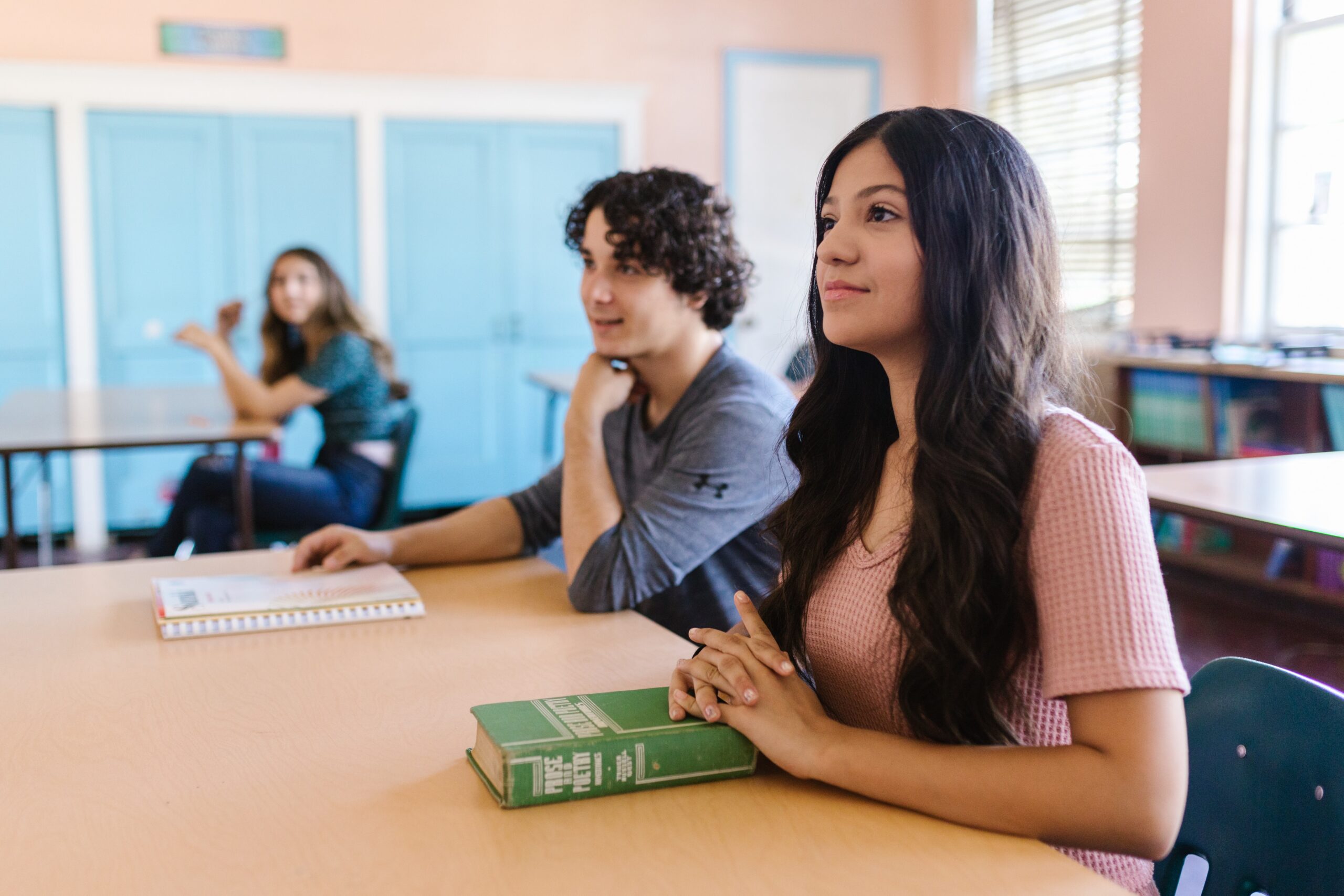
Why SEL Has to be More Than Just a Class
By: Andrew McPeak
A few months back I had the pleasure of teaching three sessions at a district-wide conference for K-12 teachers. As a part of my presentation, I made a point to talk about why building Social and Emotional Learning (SEL) skills during the pandemic was one of the most important challenges we could take on as educators. After all, never has the need for something like “self-management” been so crucial as when a student is forced to attend school at home all on their own. If they are not managing themselves, who is?
During the Q&A portion of my time a teacher asked a question that has shaped my thoughts for the several months since:
How do we get parents to help us teach SEL when the students are at home?
I almost laughed out loud. Do you know why?
I laughed (thankfully to myself) that day because if you breakdown the competencies of SEL you will realize that the life skills which we now teach in our classrooms were taught almost exclusively by parents and communities (not schools) for the entirety of human history up until we started collecting these skills together, naming them, and stamping the term SEL on them.
Our irony is that these same skills which are often passed off by parents because they sound academic, were taught almost exclusively by parents as little as 30 years ago. What’s changed about the world today is our fundamental belief as a society of who is in charge of the social and emotional development of our children.
So who should be in charge of SEL development? The answer is simple: all of us.

How Did Schools Become Responsible for SEL?
Alfred Binet, creator of the first IQ test, once said, “Success in school admits of things other than intelligence; to succeed in his studies, one must have qualities which depend on attention, will, and character.”
In the minds of parents, students, and yes even teachers, SEL has (especially in the last 10 years) become an “academic subject.” Rather than being seen as the set of life skills that all adults in a student’s life must come together to help them develop, we have transformed the development of these skills into classes, curriculums, and syllabi. Of course, you can understand the reasons why:
- Parents are pressed for time today. When are they supposed to teach their children these skills?
- Communication to today’s students can be hard. Many parents feel they are “outsourcing” the development of their children to “professionals” (colloquially known as teachers).
- Research shows that SEL development is linked to success in life. The development of hard skills and soft skills are now both linked to academic achievement. “Why wouldn’t they both be taught in the same place?” a reasonable parent might ask.
Recently, I’ve been reading Adam Saenz’s book, “The EQ Intervention.” It’s a fantastic overview of the phenomena of SEL, where it came from, and how to do it well. In his summation of the most successful SEL programs, Saenz makes a fascinating point about the effectiveness of different types of interventions:
“Since SEL is clearly important, the question then becomes how we empower educators and students with the SEL skill set they will need to be successful. There are three main approaches to SEL interventions. The first approach is the mental health professional as the interventionist. In this model, the counselor or school psychologist enters a classroom to deliver a fifteen-to twenty-minute SEL lesson. That model is certainly better than no intervention at all, but it tends to lack effectiveness. The second model is the classroom teacher as the interventionist. This model is more effective because it is scalable: Each student has the opportunity to receive a lesson on any given day by any given teacher. The third option is the most effective, and that is every adult as the intervention. Note that the intervention in the third model is not a curriculum, per se, but every adult committed to being a living example of emotional intelligence.”
Did you catch that? What Saenz is effectively saying is that not only should parents be involved in the development of SEL skills, all the adults in a student’s life should be both teaching and practicing these skills in front of our students. When a student is surrounded by a group of adults who are all modeling the social and emotional skills we want them to learn, that is the most effective intervention imaginable.
So, if you are a teacher in a school, how do you help make sure the SEL skills you teach each week transfer to the homes in your community? If you are a parent, how do you practice these skills practically with your children? Let me give you a few ideas to get you started.
5 Ideas to Help Parents Apply SEL Skills at Home
Let me give you five ideas for SEL application in the home. I am going to tie each idea to one of the five core competencies of SEL as outlined by CASEL. Use this list to get you started. I am sure that you will come up with even more clever ways of engaging students with SEL as you go.
1. Self Awareness
Have your whole family take an assessment like “Strengths Finder,” “The Big Five Personality Test,” or even a “Values Assessment.” Each family member should then share their results and talk about what each of you “brings to the table.” How could you better leverage each person’s uniqueness as a whole family? (e.g. Perhaps the person with the highest “openness to experience” in their personality should help to plan the next family vacation?)
2. Self Management
Have the whole family think about an area of their life that is important to them, but where they don’t feel they are as disciplined as they could be. Each person should describe the area and share with the family why they don’t feel they are always as disciplined as they could be. Next, identify three things you can do daily to be more disciplined in that particular area. Write these things down. Commit in front of the whole family to practice those three things for one week. After the week is over, process with the family over dinner: What was easy? What was more difficult? How did it make you feel? Are you going to keep practicing any of your new disciplines?
3. Social Awareness
Watch a documentary together about a social issue that your kids don’t know much about. This is one list of documentaries on Netflix. Be sure to consider the age-appropriateness of the topic for your child! The goal is to build empathy for the people you see on screen and the issue or injustice they are facing. Afterward, discuss what life looks like from this person’s perspective. What issues are they facing that you were not aware of before? What will change about your life now that you have this new perspective? How will this change the way you see others?
4. Relationship Building
On a piece of paper, have each member of the family develop a list of people that are a part of their “emotional support network.” Assign the following roles to the list of people, only one role per person: Heroes (people you look up to and admire); Role models (people who do what you’d like to do); Mentors (people who coach you and support you); Inner Circle (people who are closest to you and who are like family); Mentees (people who learn from you); Partners (people that you hang out with and hold you accountable). Are there any gaps? Are there people who are a part of this network who you need to reconnect with?
5. Responsible Decision Making
Grab a headline from your favorite local news source. The story should suggest a challenge your community is facing that does not have an obvious or agreed-upon solution. Challenge your kids to think about how they would make the decision if they were in charge:
- How would they evaluate the options?
- Who would they consult?
- How would they decide between the options?
- What values drove their decision making? (And where did those values come from?)
Maybe to you, these kinds of activities sound like a lot of work. They certainly can be, but developing these skills now is a lot less work than facing adult children down the road who have obvious gaps in their social or emotional development. In “The EQ Intervention,” Saenz puts the need for intentional action in these areas into perspective for us:
“When we don’t [take the] time to consciously engage our SEL skills, our core-level beliefs—our deepest values, fears, biases, and prejudices—drive our behavior automatically.”
SEL is more than just a class, but great social and emotional skills are not going to develop themselves. It’s time for a community-wide approach to SEL.






